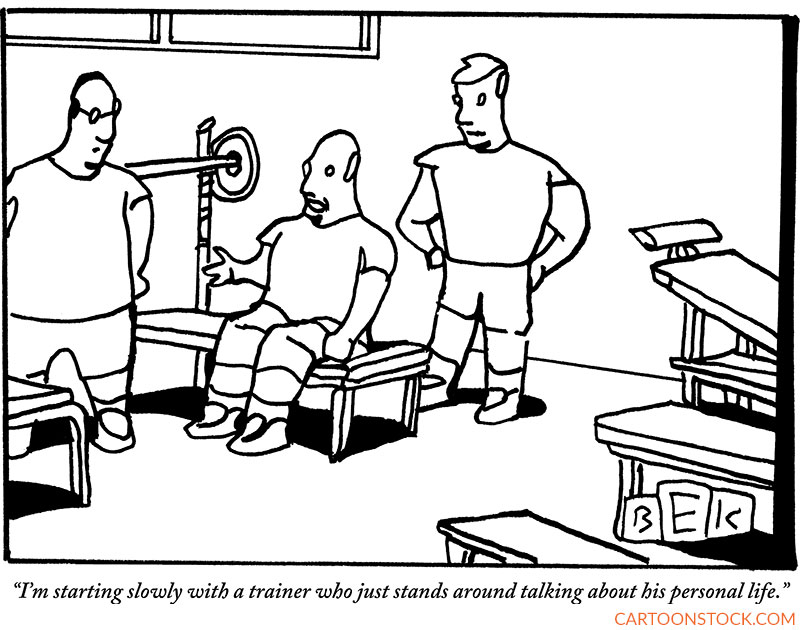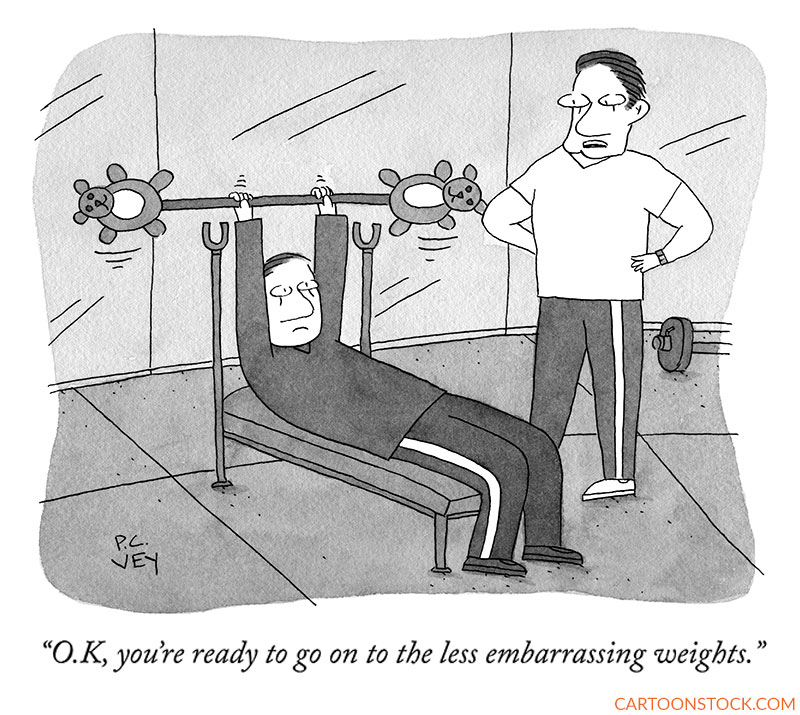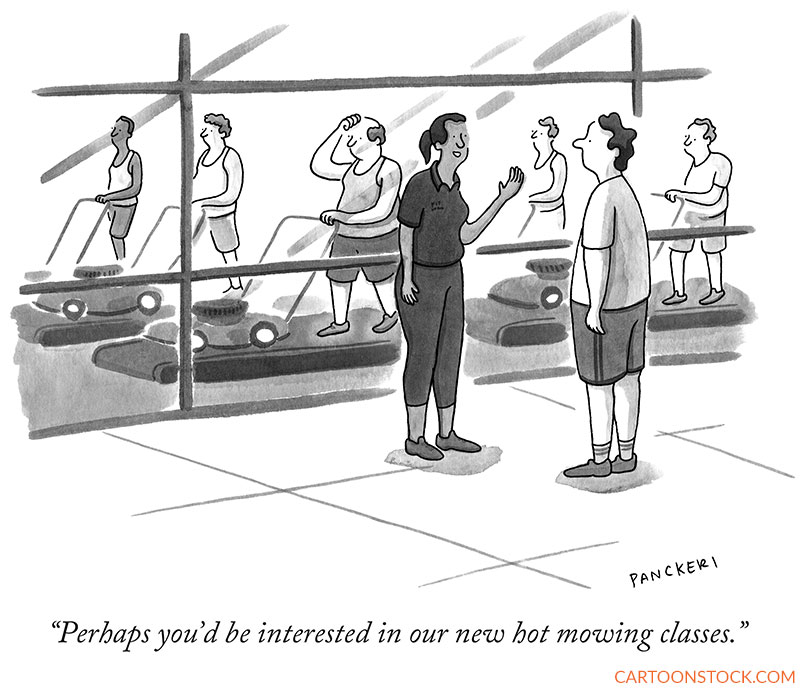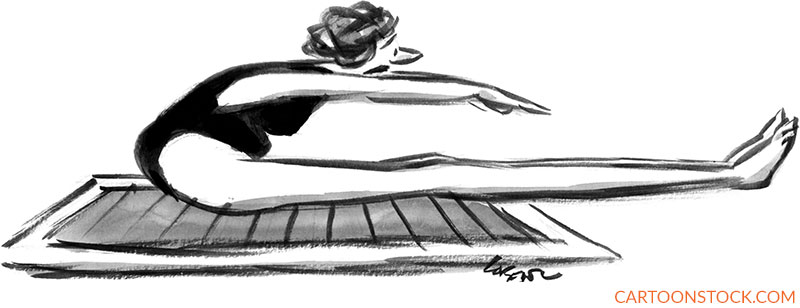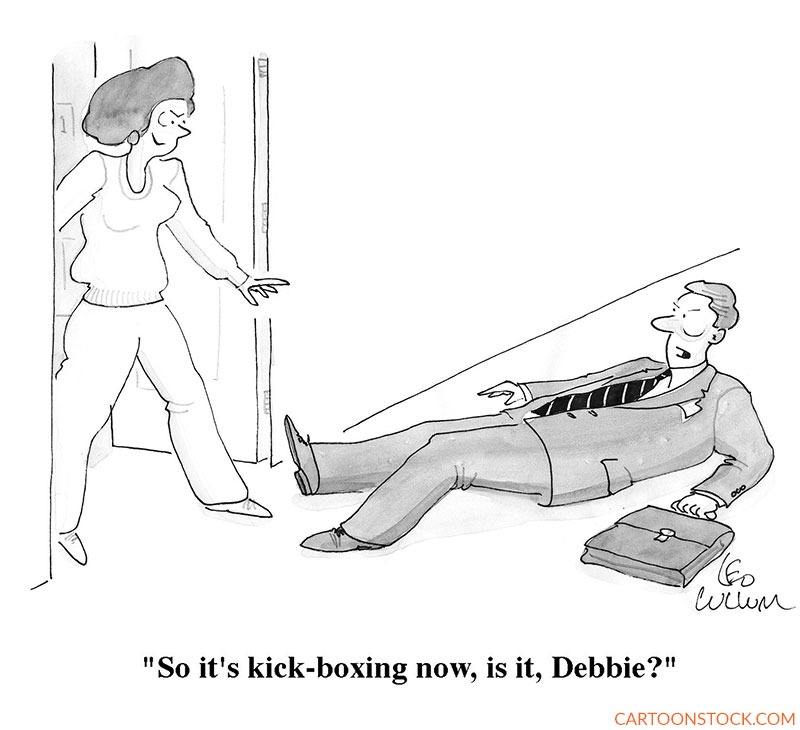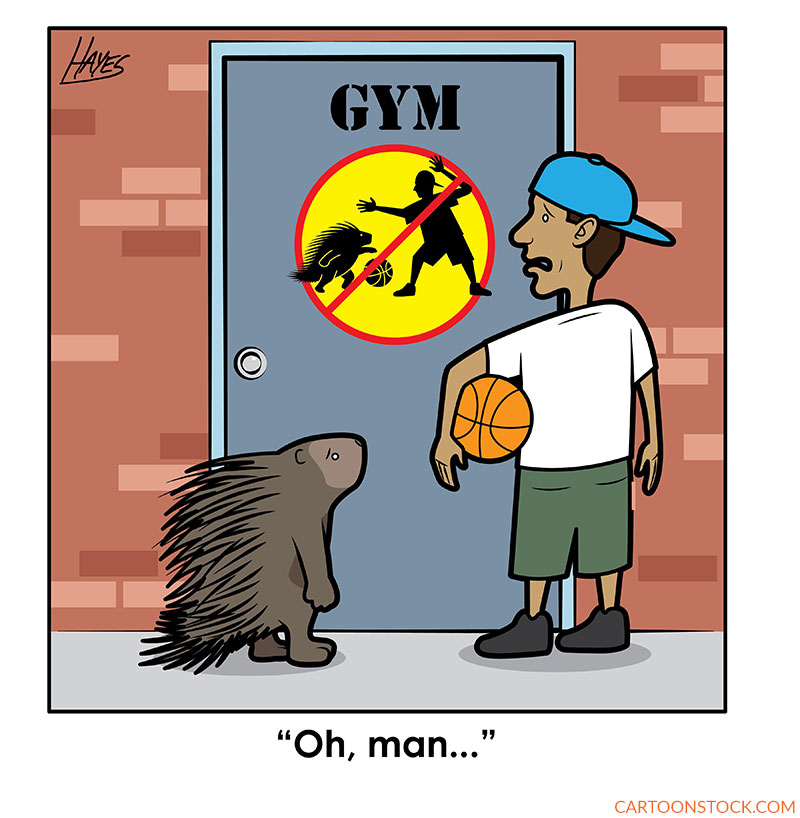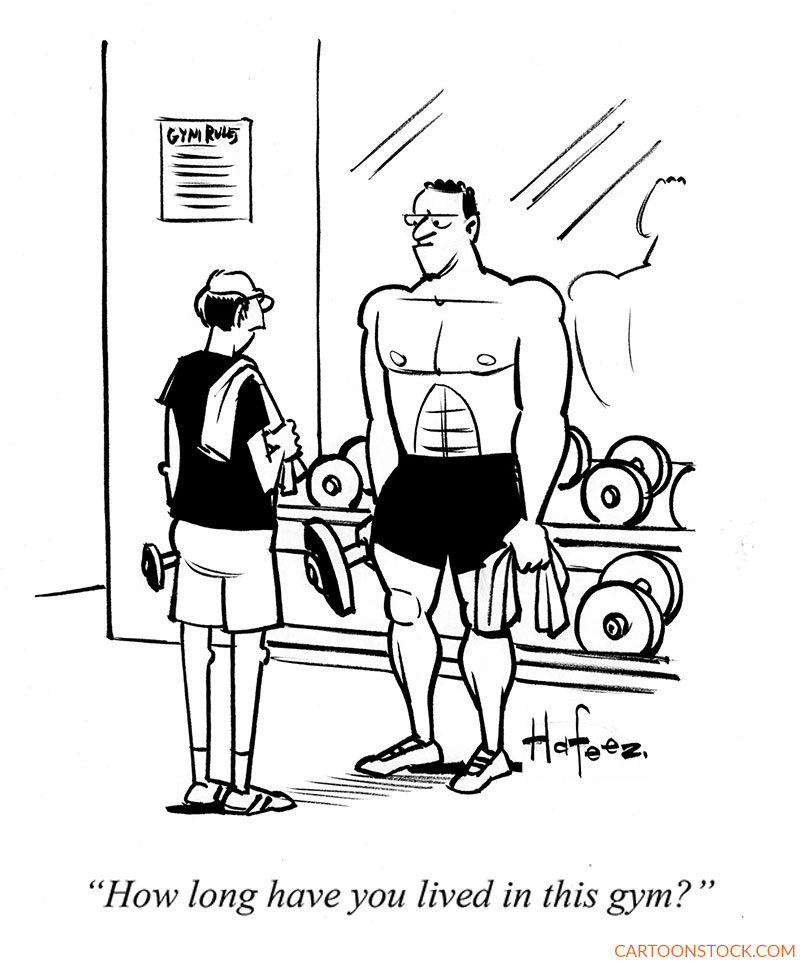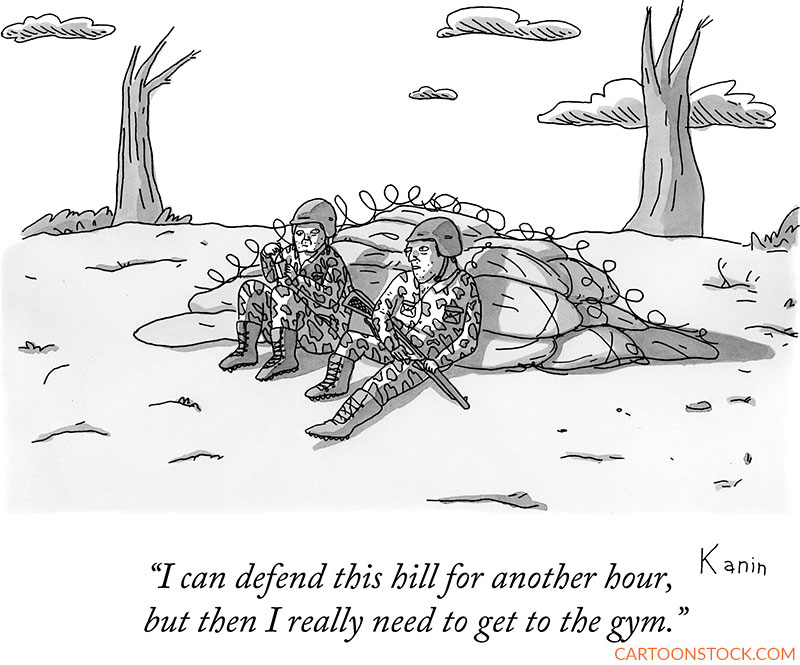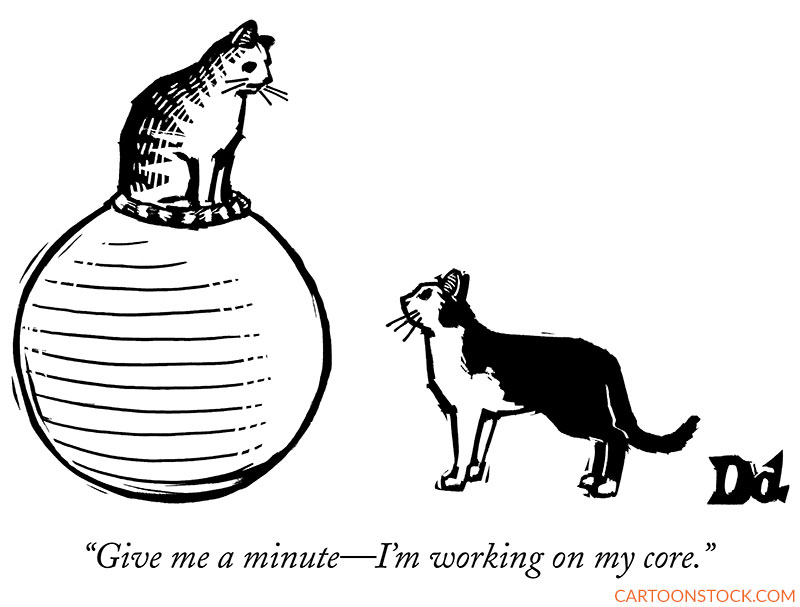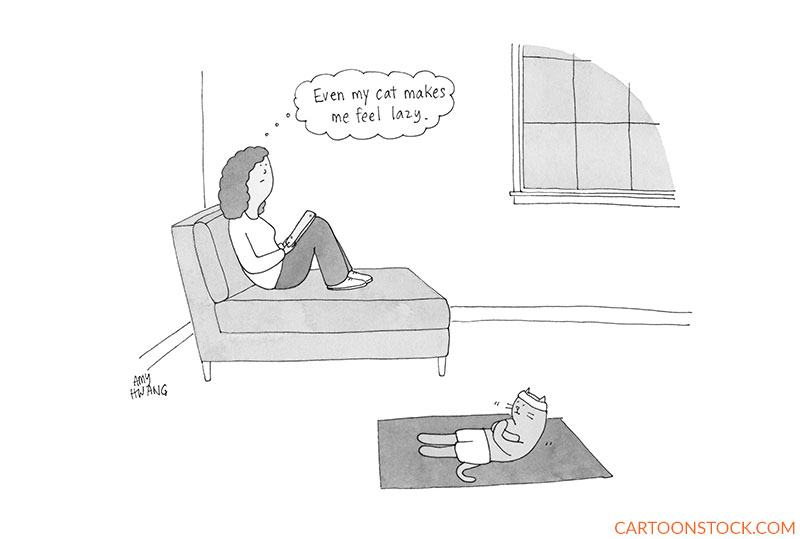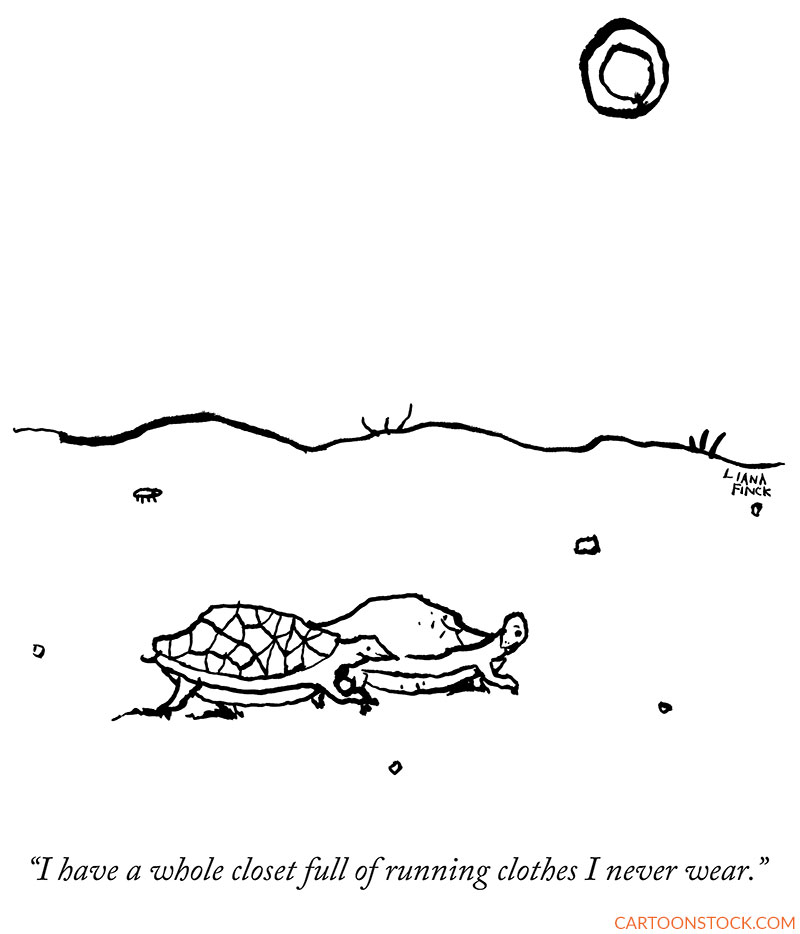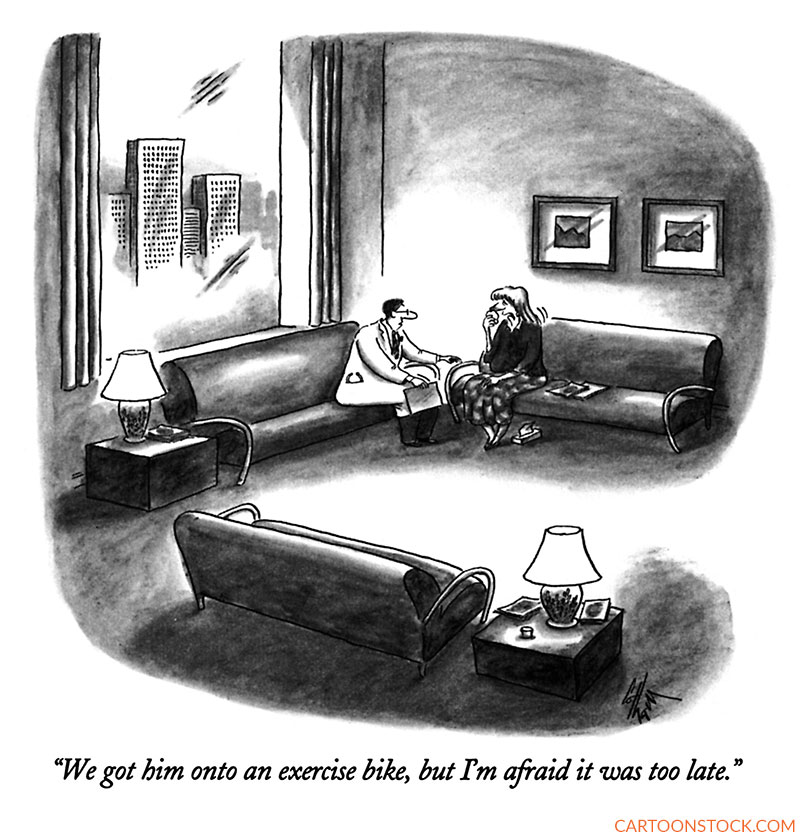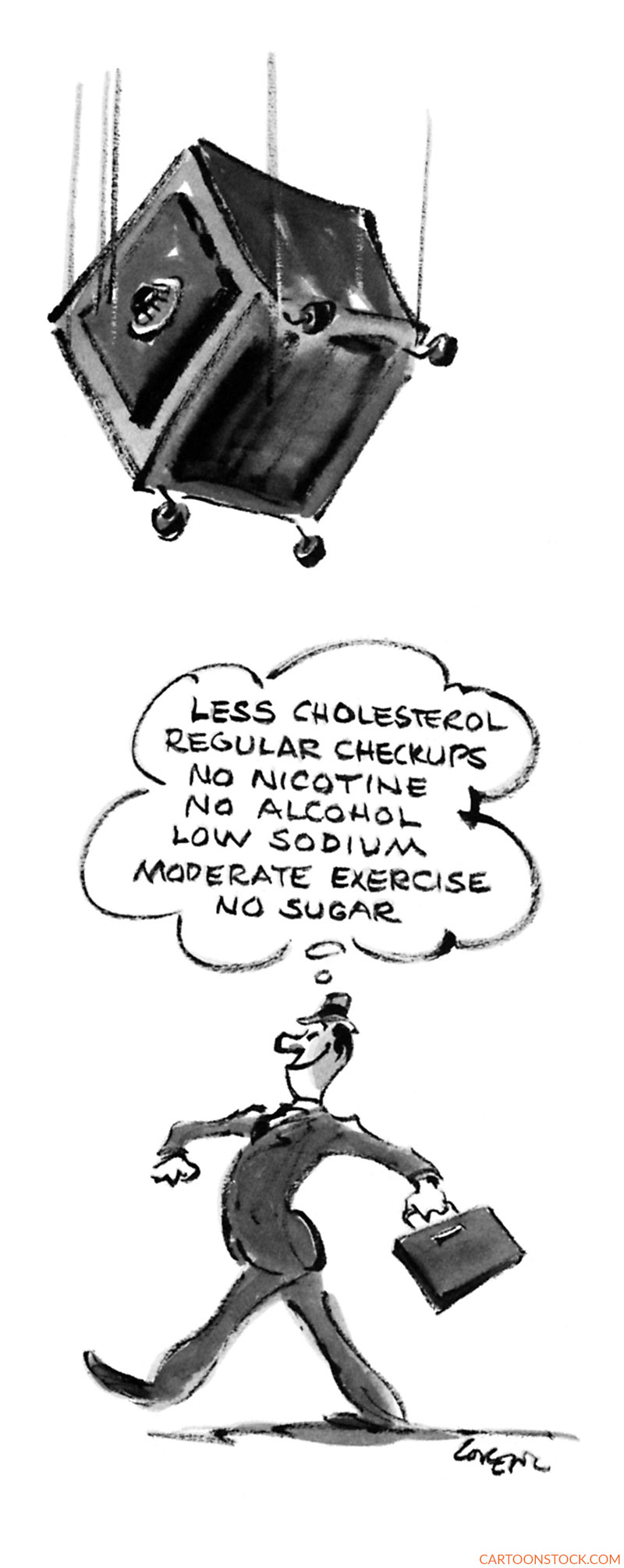
Cartoon critics Phil Witte and Rex Hesner look behind the gags to debate what makes a cartoon tick. This week our intrepid critics take a look at heading to the gym.
For more than a year we all had a good excuse for not going to the gym: it was closed. Now that fitness centers are reopening, many of us are returning to the weight room, spinning class, and yoga studio, willing to pay a monthly fee to sweat and strain. Our love-hate relationship with exercise is the sort of conflict that inspires cartoonists.
You don’t want to rush into things, and it may take a while to get back into pre-pandemic shape. A personal trainer can help. It’s important that you and your trainer have the same goals in mind. Bruce Eric Kaplan illustrates this point with a cartoon about compatibility.
The trainer in Peter Vey’s cartoon takes a very different approach: motivation through humiliation. The choice of teddy bears is inspired; any lightweight object would have served the purpose, but relying on a child’s cuddly stuck improbably on either end of a barbell adds a degree of absurdity that often characterizes Vey’s cartoons.
Fitness classes are a big attraction, perhaps because group participation helps to motivate gym members, or maybe because misery loves company. Adding a gimmick, perhaps an activity familiar to the average suburban male, might entice guys to join a class, especially if hot yoga doesn’t appeal to them, a point illustrated by Drew Panckeri.
Floor exercises have been a component of workout regimens for decades. Lee Lorenz, a former cartoon editor at The New Yorker, captures the seeming impossibility of performing a simple movement in a caption-less cartoon that is brilliant in both its simplicity and originality.
The late Leo Cullum shows what can happen when a wife joins a fitness club to re-channel her hostility—which may spill over into her domestic life. The cartoonist chose to depict the moment after the violent act, with Debbie standing triumphantly over her fallen husband. We know much about this relationship from a single image.
The variety of physical activities available at fitness centers is staggering. But sometimes a guy just wants to head down to a regular old gym to play a little one-on-one with his friend. In a cartoon that explores uncharted territory, Colin Hayes illustrates the disappointment each feels upon learning of unfair restrictions on use of the hardwood.
Some of us can’t stay away from the gym. This type of dedicated individual may not have much of a life outside the mirrored walls of the weight room, as seen in Kaamran Hafeez’s cartoon. Note that the dumb-bell size correlates with the size of the respective lifters.
Zach Kanin, whose humor is rooted in the bizarre, takes the exercise addiction to the next level. The setting and the first half of the caption set up a completely unexpected gag.
Cats are not creatures we associate with exercise. Turning that notion on its head, Drew Dernavich, in his bold, spare style, presents a cat that somehow stays atop an exercise ball in the hope of improving its physique.
One of the premier practitioners of the art of cat cartoons, Amy Hwang, offers an even more unlikely scenario. Getting shown up by a feline is deeply embarrassing. The headband on her pet underscores its dedication to staying kitty fit.
Of course, animals in cartoons are often a stand-in for humans. In a cartoon by Liana Finck, a tortoise makes a very human confession.
Frank Cotham is unafraid of venturing into the darker realms of cartoon humor. The doctor notifying a patient’s wife of an unsuccessful outcome is a favorite topic of his. The deep grays and heavy shadows evoke the proper mood for this somber setting and set up the absurdity of the caption.
We conclude with another cartoon by Lee Lorenz, whose work invariably conveys a dynamic energy that is unmatched. The humor is both silly and sobering. All exercise, he seems to say, is an exercise in futility.


